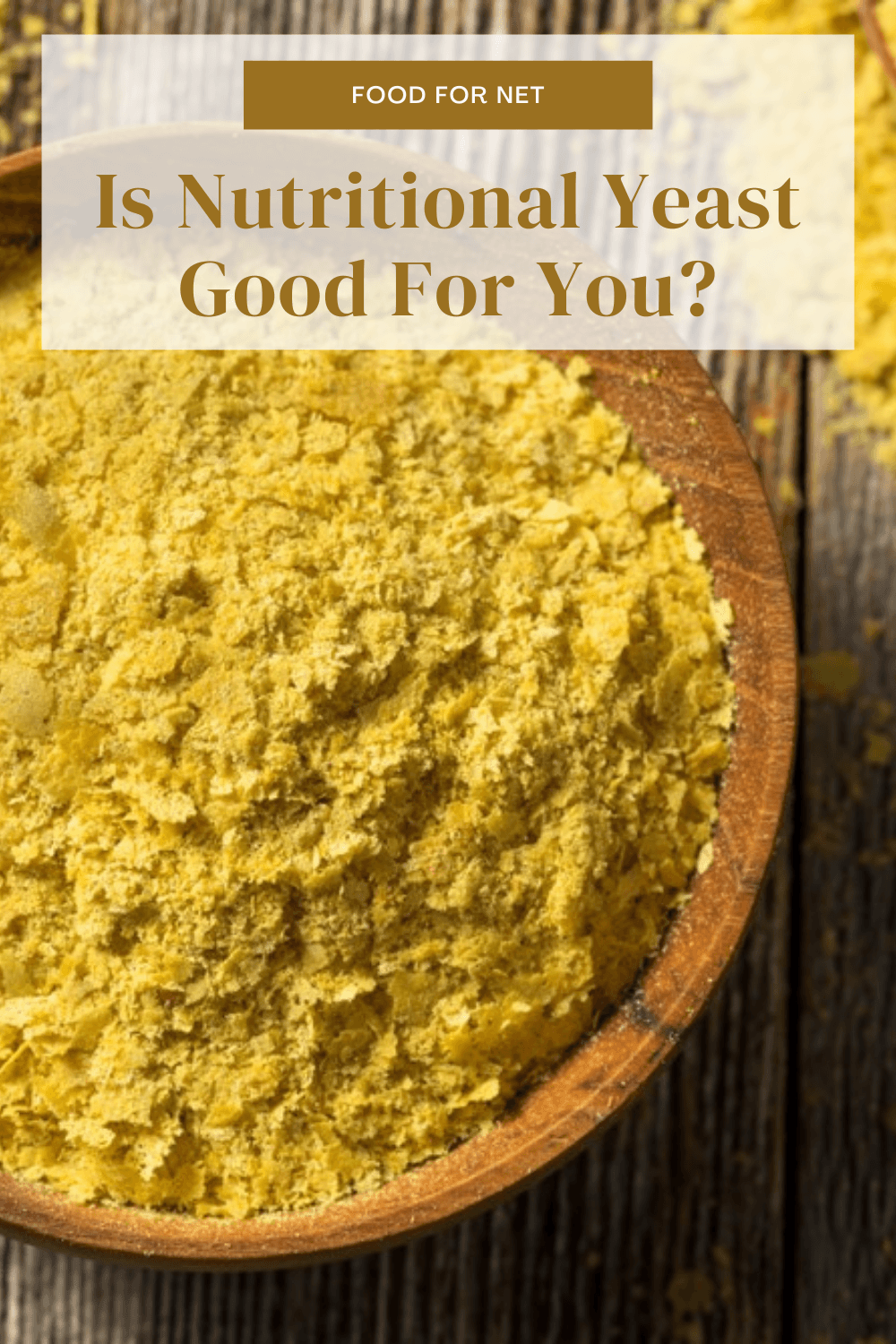
Nutritional yeast isn’t normally seen as a health food. Instead, it’s most popular as a way to add a cheesy flavor to a vegan dish, one that makes your food taste that much better. It can seem like the perfect product for anyone hankering for some cheese, but is nutritional yeast good for you?
The most obvious answer here is yes. Plenty of vegans use nutritional almost as a supplement, as they’re interested in the protein and B vitamins that it contains.
Still, most foods have at least a few concerning features. Take garlic, for example, it’s a popular spice that’s been linked to many benefits, yet garlic can also cause side effects. It can interact with blood thinning medications too, as can the vitamin K in leafy greens and other foods.
This is why it’s so crucial to think carefully about the foods you eat. So then, let’s take a close look at nutritional yeast.
Is Nutritional Yeast Good For You?
- What Is Nutritional Yeast?
- Nutritional Yeast Versus Regular Yeast
- Benefits Of Nutritional Yeast
- The Problems With Nutritional Yeast
- How Do You Use Nutritional Yeast?
- Is Nutritional Yeast A Probiotic?
- What Does Nutritional Yeast Taste Like?
- Final Thoughts
What Is Nutritional Yeast?
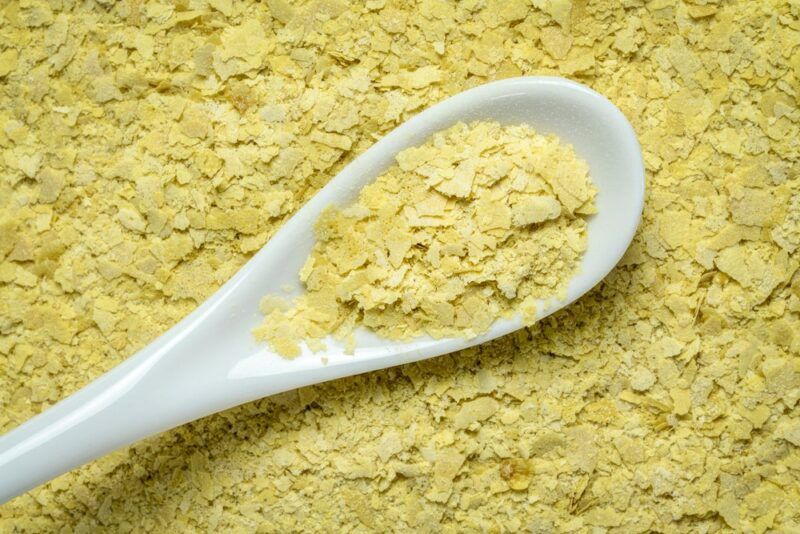
Nutritional yeast is a form of deactivated yeast. It’s often seen as a nutritional supplement, although many people use it purely for the flavor.
You’ll see it turn up frequently in vegan recipes. In fact, it’s hard to find a vegan cookbook that doesn’t use nutritional yeast at least a few times.
The yeast is grown for a few days, using some type of sugar-rich medium, such as molasses. Then, heat is used to deactivate the yeast and it is dried and made ready for distribution.
You can find it in many stores, often in the form of powder, flakes, or granules.
Nutritional Yeast Versus Regular Yeast
Nutritional yeast is similar to the yeast that’s used for baking and for brewing beer. All three uses rely on the same species of yeast – Saccharomyces cerevisiae.
The biggest difference is that baker’s yeast is still living when it’s purchased. It gets killed during the process of cooking bread. Brewer’s yeast tends to be alive when used to make beer. In both cases, the yeast needs to be alive or it wouldn’t cause the fermenting and bread-making effects that are needed.
On a side note though, you can purchase dead brewer’s yeast as a nutritional supplement. This has generally been through the fermentation process and is no longer active.
Nutritional yeast, on the other hand, isn’t living at all. You’ll often see terms like deactivated, dead, or non-living, which all mean much the same thing. The deactivation is important. This allows you to use the yeast simply for its flavor and nutrients, without it interacting with your other ingredients in any way.
Because nutritional yeast is grown on molasses or some other glucose-based medium, it ends up being gluten free. In contrast, brewer’s yeast is sometimes grown on grains, so deactivated brewer’s yeast may contain gluten.
Benefits Of Nutritional Yeast
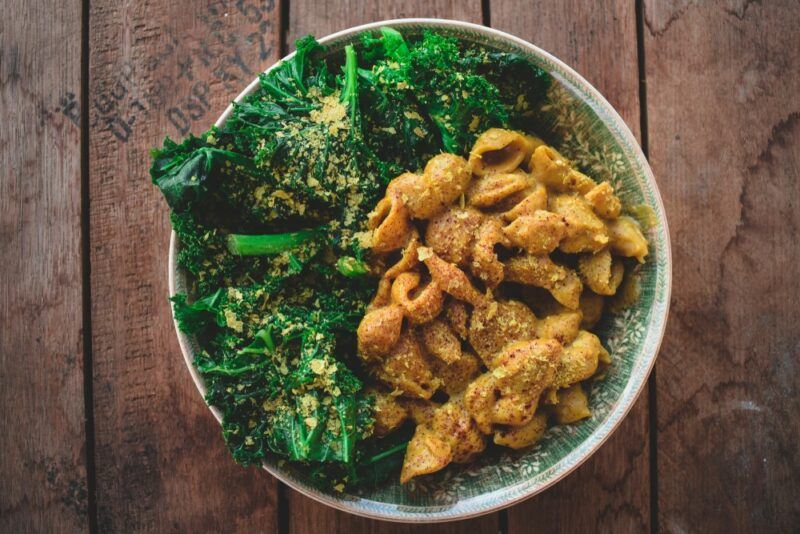
The Vitamin B12 Content
Nutritional yeast is often promoted as a source of vitamin B12. This is crucial, as vitamin B12 plays important roles in brain function, our red blood cells, and various other parts of our body.
Unfortunately, most vitamin B12 rich foods come from animals. This makes vegetarians and vegans vulnerable to vitamin B12 deficiency. Nutritional yeast offers a simple way to boost your vitamin B12, as it’s easy to add the yeast to your meals.
There is one catch though.
Yeast cannot produce vitamin B12 on its own, so any nutritional yeast with vitamin B12 has been fortified (meaning that the B12 was added in). This isn’t so different than eating any other vitamin B12 fortified food or using supplements.
You’ll also need to choose your brand carefully, as some nutritional yeast products are fortified with vitamin B12, while others aren’t.
Other Vitamins And Minerals
Thankfully, you are getting other important nutrients in nutritional yeast, including the various B vitamins, potassium, iron, and calcium. Other interesting components include beta-glucans, mannan-oligosaccharides, and dietary nucleotides, all of which may promote good health.
While the nutrient levels are often higher in fortified yeast, there are still plenty of nutrients in unfortified yeast too.
It pays to check the ingredients label here, as fortification and growing conditions can both influence the nutrient content. This is why some nutritional yeast products are rich in folate, while others aren’t.
Of all the nutrients present, the B vitamins are easily the most popular. These are thought to boost your energy levels (which is why you see them featured in energy drinks so often).
The claim makes sense too, as B vitamins are part of your energy metabolism. If you don’t get enough B vitamins elsewhere in your diet then, yes, nutritional yeast should help to boost your energy levels.
As with most vitamins and minerals, however, you’ll only see improvements if you need B vitamins. If you are already getting plenty of B vitamins in your diet, the effect on your energy may be subtle or non-existent.
It’s A Good Source Of Protein

Nutritional yeast is an excellent source of protein, giving you around 8 grams of protein in a quarter-cup serving. Plus, because nutritional yeast can be included in so many recipes, it’s an easy way to boost your protein intake. You can even just sprinkle it on top of your eggs or mashed potatoes.
Doing so is important, as protein plays so many roles in our bodies. Vegans are also missing out on some of the main protein sources, including meat, eggs, and dairy, so having an option like nutritional yeast makes things a little easier.
It Contains Some Fiber Too
There’s also fiber in nutritional yeast. We all know how important fiber can be, as it helps to keep our digestive systems working as they should.
The fact that nutritional yeast is a microbe could be relevant to our gut and digestive health too. We’ll come back to that topic a little later in the discussion.
It Helps You Follow A Plant-Based Diet
The vitamins and minerals in nutritional yeast aren’t the only reason to talk about this ingredient. After all, many people aren’t using nutritional yeast for its nutrients at all. They’re interested in the flavor, which is often described as cheesy, nutty, and savory.
While nutritional yeast doesn’t taste exactly like cheese, it’s one of the best options that vegans have.
Being able to mimic the flavor of cheese is a surprisingly important effect. Restrictive diets, like veganism, can be difficult to follow. Having access to familiar flavors helps make the process just a little bit easier, helping people to stick to the diet.
It Suits Many Diets
Nutritional yeast isn’t just for vegans. It’s a versatile ingredient that works well on many different diets, as it is gluten-free, fat-free, sugar-free, and naturally low in sodium. It can be included on a keto diet too and many versions are even paleo-friendly.
Nutritional Yeast Can Improve Your Health
With all these features, it’s not surprising that nutritional yeast has been linked to health benefits too, including immune system improvements. The importance of this effect can’t be underestimated. After all, your immune system is what helps you to fight off infections.
Nutritional yeast can also help with heart health. It includes components like niacin and beta-glucans, which have been linked to decreased cholesterol. Some of the minerals present may lower blood pressure as well.
Most studies have focused on the effects of individual components, rather than nutritional yeast itself. Still, the evidence suggests that nutritional yeast could be powerful. This is reason enough to try it.
The Problems With Nutritional Yeast

Can Cause Side Effects
The fiber content of nutritional yeast is helpful but can cause side effects, especially if you’re dramatically increasing your fiber intake overnight.
You can end up with side effects like stomach cramps and diarrhea. To get around this, you need to increase your fiber intake slowly, rather than all at once. Also, make sure that you’re drinking plenty of fluids. Too little fluid increases the risk of side effects from fiber.
Another side effect is facial flushing, where your skin becomes red and can feel a little like it is burning. The flushing happens because of the niacin (vitamin B3) in nutritional yeast.
Thankfully, the side effect isn’t something to be concerned about. It’s also linked to high niacin doses, so you mightn’t experience it at all.
Contains A Decent Amount Of Tyramine
Nutritional yeast contains a compound called tyramine, which comes from the amino acid tyrosine. This naturally occurring compound isn’t dangerous, but some people find that tyramine increases their risk of migraines.
Tyramine also interacts with some medications, particularly MAOIs, which are used to treat depression. This combination can lead to dangerous spikes in blood pressure levels.
There’s A Risk Of Contamination
Contamination is another serious problem. Yeast supplements are often contaminated with ochratoxin A, which can harm your kidneys.
Most research has focused on the contamination of brewer’s yeast, rather than nutritional yeast. Still, the products are similar, so many of the same patterns should apply.
Focusing on reliable brands should help you to cut down the contamination risk. Pay attention to your body too. If you get more side effects from one brand than from another, it’s a good sign that something is wrong.
There Are Purines Present Too
Another problem is the purine content. Purines are naturally occurring compounds that are precursors to uric acid. A high purine diet may increase the risk of gout and increase pain for people who already have gout.
Nutritional yeast might seem relatively safe at first glance, as it is deactivated and doesn’t come from an animal. Even so, you’re getting a high amount of purines. Besides, nutritional yeast isn’t a type of plant, so the research into plant-based sources of purines doesn’t apply.
In the end, anyone sensitive to purines should avoid nutritional yeast entirely. This includes people with gout or kidney stones.
How Do You Use Nutritional Yeast?
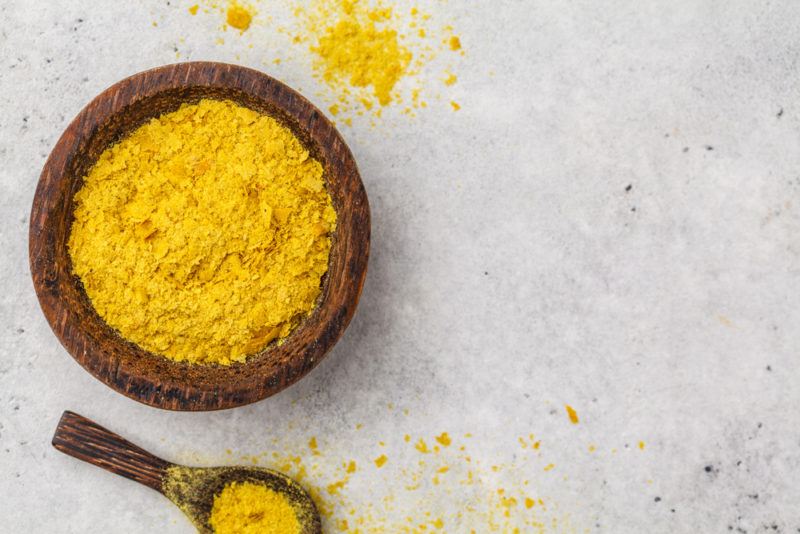
Nutritional yeast comes in the form of a powder or flakes. It doesn’t need to be cooked, so you can mix it into your recipes as-is or even sprinkle it across your food. Some cinemas have embraced this approach, offering powdered nutritional yeast that can be shaken on top of popcorn.
Why not try mixing the yeast into your mashed potatoes or pasta?
You can also use nutritional yeast instead of cheese to help make a recipe vegan friendly. Vegan mac and cheese recipes, for example, often rely on plant-based milk and nutritional yeast, along with the more familiar ingredients.
Is Nutritional Yeast A Probiotic?
Probiotic foods are an important way to improve the balance of bacteria in your gut and promote a variety of health benefits. Nutritional yeast seems like an obvious way to do this, as it is yeast, after all.
There’s a problem though.
Most probiotics contain live microbes, not deactivated ones. Using live microbes is also the whole point, as you’re trying to get more healthy bacteria in your gut. Deactivated ones aren’t likely to have that same effect.
Despite this, nutritional yeast may have some benefits, as one study found that it had probiotic-like effects. The yeast may also have prebiotic functions, meaning that it acts as a source of food for the bacteria in your gut.
So, whether or not nutritional yeast is technically a probiotic, it appears to help your gut, which is a good reason for using the yeast regularly.
What Does Nutritional Yeast Taste Like?
Nutritional yeast is often seen as an alternative to cheese, giving you a similar flavor, while still remaining entirely vegan-friendly. However, as you might have guessed, not everyone agrees.
Some people highlight other aspects, saying you get a “unique savory flavor” or calling the yeast nutty instead. One Redditor mentioned that it is “more like the kind of kind of cheese you’d taste in ‘cheesy flavored crisps’. Not so much like actual cheese”.
Honestly though, this isn’t surprising. We are talking about yeast, after all, it’s never going to taste exactly like cheese. Still, if having cheese isn’t an option for you, anything vaguely cheese-like may become very appealing.
And, despite its popularity, not everyone enjoys the flavor of nutritional yeast. Some say that it “tastes horrible” and struggle to find ways to make it edible, while others find they need to use the yeast in small quantities to enjoy it.
Final Thoughts
Nutritional yeast does have some health benefits, due to the B vitamins present and the protein content. Even so, the yeast isn’t as powerful as you might expect. B vitamins can be found in various other foods and there is no shortage of vegan sources of protein.
The most standout feature of nutritional yeast is the B12 content. But, even this isn’t very exciting, as the B12 comes from fortification. You might as well just take a vitamin B12 supplement.
In the end, nutritional yeast is healthy, but it’s certainly no superfood. If you enjoy the flavor, then great, nutritional yeast is an easy guilt free ingredient. If you don’t, no worries, you can get those same nutrients elsewhere.
Frequently Asked Questions
Does Nutritional Yeast Go Bad?
Nutritional yeast has a decent shelf life, lasting as long as 2 years, if you’re careful with how you store it. You can generally use the yeast for a few months after its expiration date too.
Still, like most foods, nutritional yeast will go bad. Keep an eye out for changes in the color or smell of your yeast, particularly if it smells sour or has become darker. These are strong indications that the yeast needs to be thrown away.
The storage conditions will change how long the yeast lasts as well. For example, yeast stored in the fridge tends to last longer, while yeast stored in the pantry during summer will have a much shorter shelf life.
Where Is Nutritional Yeast In The Grocery Store?
Nutritional yeast is most often found in the health food section of your grocery store or with natural foods. You’ll sometimes find it stored with spices instead or in bulk bins.
If you have no luck in your local grocery store, try a health food store instead. These almost always stock nutritional yeast.
Is Nutritional Yeast Good For Diabetics?
Nutritional yeast does have some potential benefits for diabetics, including helping to maintain their blood sugar levels. It contains some nutrients, which are always important.
Plus, nutritional yeast doesn’t have any features that might be a particular concern for diabetics. This means that you can easily include it in your diet and try it out for yourself.
How Much Nutritional Yeast Should I Eat Per Day?
There hasn’t been much research into the ideal dose of nutritional yeast. However, most people focus on using up to a few tablespoons of the yeast per day.
Levels like this appear to be completely safe. You’d need to consume much more to put yourself at risk of overdosing on any nutrients.
That said, nutritional yeast is high in fiber, so it’s best to add it to your diet slowly and give your body time to adjust. Adding too much fiber too quickly can lead to unpleasant side effects.
Finally, remember to pay attention to your own responses. While nutritional yeast should be safe for most people, we’re all very unique and can respond quite differently to each other.
Can Dogs Eat Nutritional Yeast?
Dog owners will be pleased with this one. Dogs can eat nutritional yeast without a problem. They may even get some of the same benefits as humans.
Just be careful with the portion sizes. It’s generally best to give them a sprinkle of the yeast (a teaspoon at the absolute most). This way they get the potential benefits without any risk to their health.
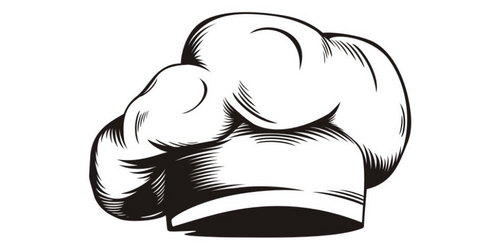



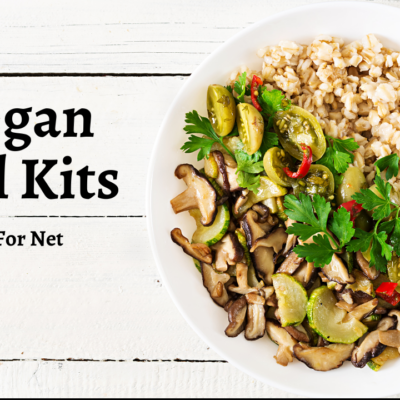

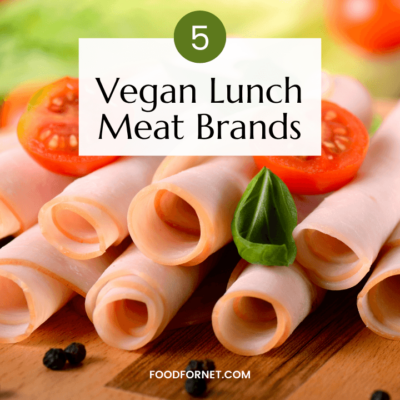
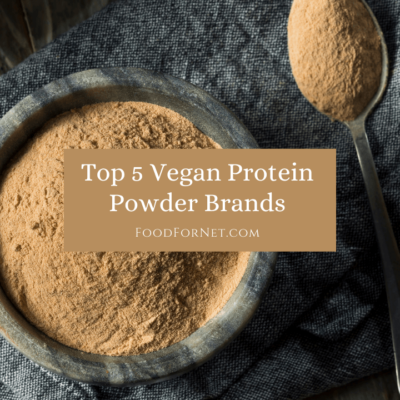

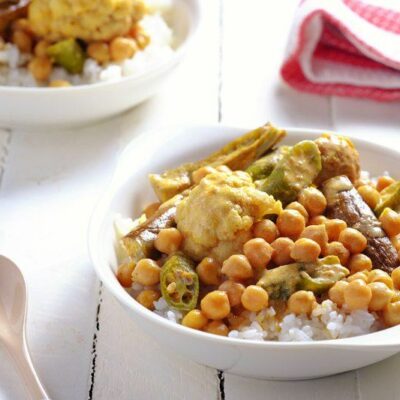
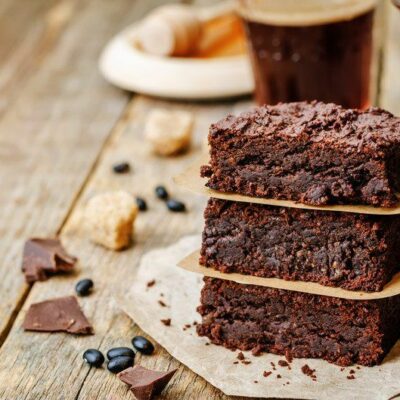
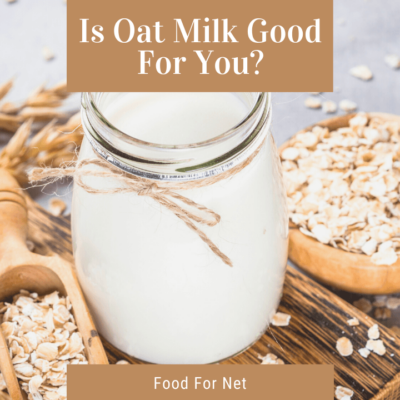
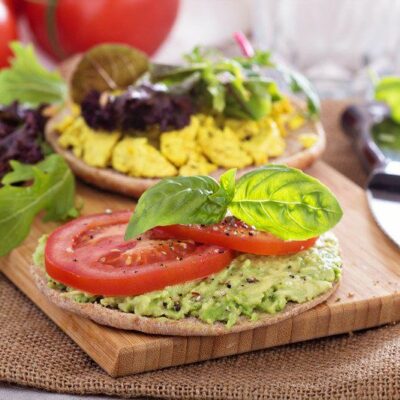

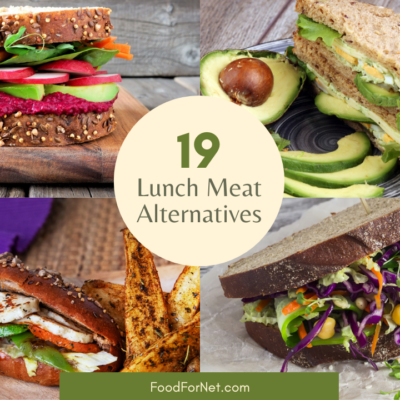

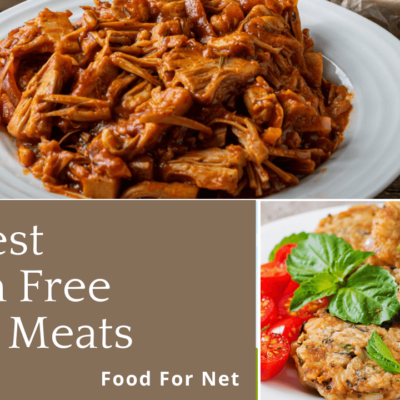
 Is Red Wine Good For You?
Is Red Wine Good For You?
Leave a Reply